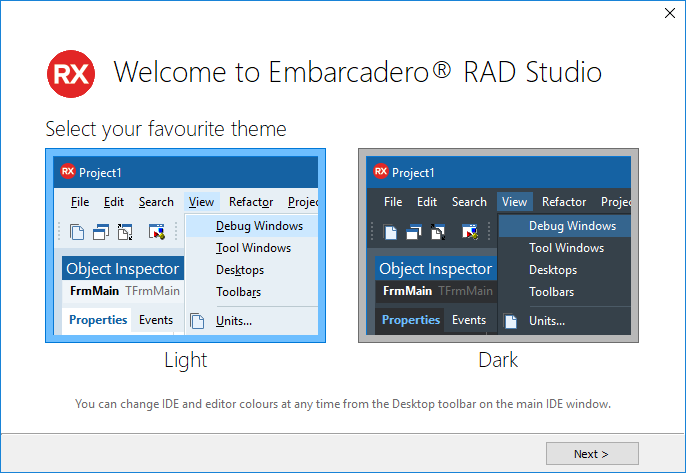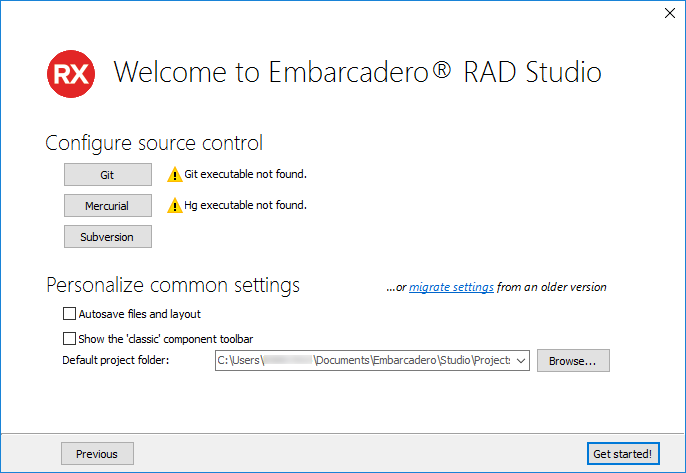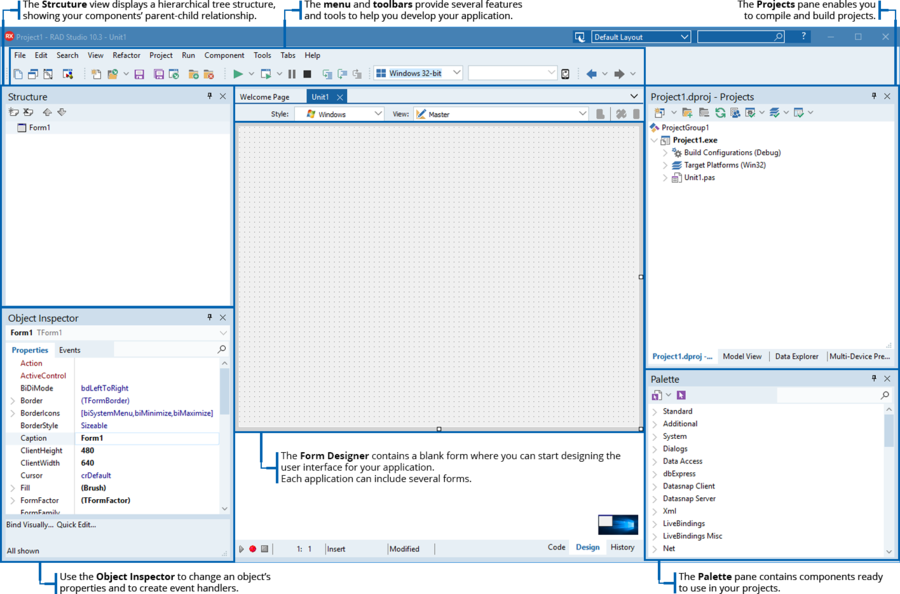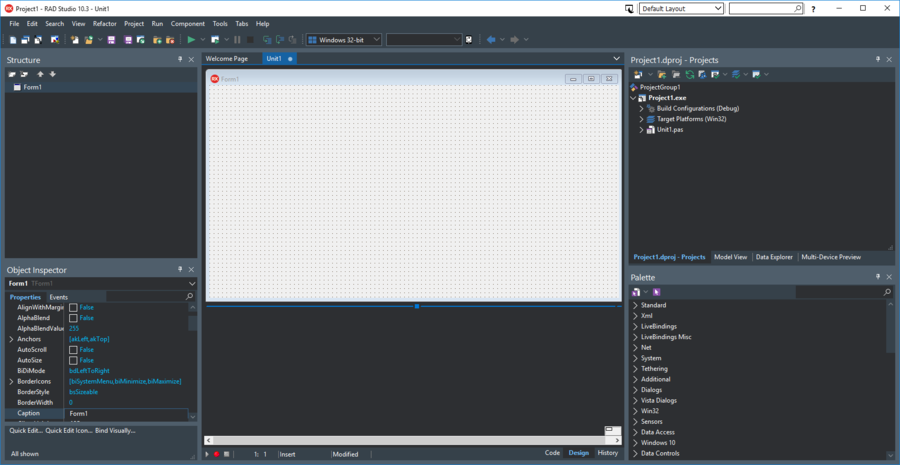First Look and Welcome Page
Go Up to Tour of the IDE Index (IDE Tutorial)
When you start RAD Studio Rio for the first time, you can select a theme for the IDE (light or dark) and configure source control and common settings.


The IDE helps you visually design user interfaces, set object properties, write code, view, and manage your application in various ways.
Contents
Personalities in the IDE
RAD Studio might contain two products, Delphi and C++Builder, that allow you to develop your applications with two different programming languages:
- Delphi uses Object Pascal as the programming language.
- C++Builder uses C++ as the programming language.
With the IDE, you can develop applications in both programming languages (Delphi and C++), depending on the products that you purchase. These programming languages are also known as personalities in RAD Studio and in the documentation.
IDE Startup Layout
When you open the IDE, RAD Studio displays a startup layout with the Structure, Obect Inspector, Palette, and Projects tool windows collapsed. You can also select the Startup Layout or another pre-defined layout from the dropdown on the top bar.

Welcome Page
The Welcome Page displays three main tabs:
Start Here
The Start Here tab displays links to contents to get you started, shortcuts to create new projects, open existing projects, or open sample projects. You can also add platforms and extensions or open the GetIt Package Manager to download add-ons.
As you develop projects, you can quickly access them from the list of recent projects available in the Open Recent section. The Sample Applications section gives you quick access to applications developed by Embarcadero to demonstrate some of the features of RAD Studio Rio.
A collapsible sidebar displays a list of upcoming events and a list of RAD Studio videos available at Embarcadero's YouTube channel.
Tutorials
The Tutorials tab contains links to videos and Mobile Sample Applications for both Delphi and C++.
Documentation
Click the Documentation tab to access the product documentation in the docwiki.
IDE Default Layout
The default IDE desktop layout includes some of the most commonly used tools. You can use the View menu to display or hide certain tools. You can also customize your desktop by moving or deleting elements. You can then save and use the desktop layouts that work best for you.
The following sections describe and show screenshots of the various available options when you open a project.
To create a new project go to: File > New > Multi-Device Application - Delphi for Delphi or File > New > Multi-Device Application - C++Builder for C++Builder.
A more detailed explanation on how to create a project is given in Starting your first RAD Studio application.
The following figure shows the IDE immediately after creating a new project that uses a multi-device form:

The top section contains the menu bar and the toolbars.

Go to View > Toolbars to choose the toolbars that you want to display in the IDE.
Dark Theme
RAD Studio Rio allows you to choose a dark theme for the IDE. The dark theme applies a completely different color scheme to the IDE, resulting in a more appropriate look-and-feel for prolonged use or low light conditions.

As part of the IDE theming options, you can:
- Enable the Dark Theme
- Enable the Light Theme
- Choose an Editor Color SpeedSetting and Object Inspector Color SpeedSetting independent from the selected IDE theme.
- Enable a VCL style-based theme
- Disable IDE theming (enables native style)
To access the IDE theming options, go to Tools > Options > User Interface > Theme Manager or select Dark from the dropdown menu available in the top bar, next to the layout combo box.